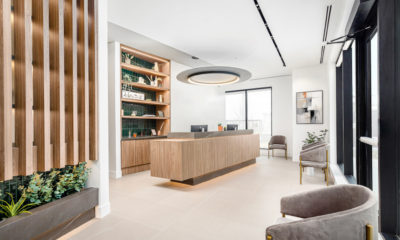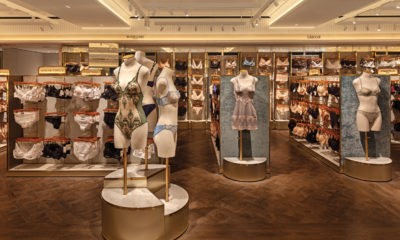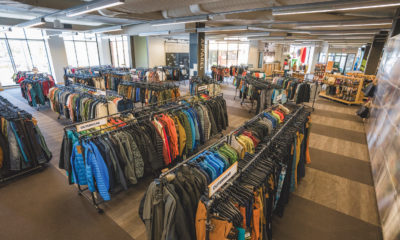Not everything “made in China” today meets retailers’ needs. Especially when it comes to sourcing fixtures.
Despite the lure of cheaper prices and the ongoing improvements in overseas manufacturing, the reality is that China and neighboring Asian countries aren’t yet a definitive source for retailer’s fixturing needs.
“You can’t buy the whole store over there,” says Steve Hekman, who runs Hekman Co., a manufacturing and sourcing company for the retail and hospitality industries. “You have to chop it up and order products selectively.”
What are the limitations?
Among the current concerns about going overseas for fixtures: Quality finishes and materials that North American retailers are accustomed to using aren’t necessarily available overseas; quality and durability standards may differ from North American standards; a skilled labor force isn’t always in place; and there’s the overall cultural disconnect.
Kevin Chaney, chief operating officer of Lotus Fixtures, a North American fixture sourcing company with production facilities in Shanghai, says simply having a bilingual team of employees on both sides of the ocean isn’t enough. “Even when the parties are speaking the same language, problems can arise because of the cultural baggage each party brings to the table,” says Chaney, who lives in China while his business partner works out of Seattle.
So Chaney recommends building a team overseas that understands both the factory and the client needs and will guard the client’s concerns through every aspect of a project, from engineering through delivery.
Those doing business overseas say understanding cultural differences is just one of several roadblocks to project success. Bess Anderson, director visual strategies for Columbus, Ohio-based design firm Chute Gerdeman, says another is matching materials. Anderson recently scouted the materials portfolio of a Shanghai manufacturer. “The acrylics and resins don’t look good,” she says. “But the stone and marble look fabulous. So it’s still hit or miss.”
Another issue deals with quality standards. “Our team has been told several times by some overseas suppliers that it’s too much trouble to meet our quality expectations,” says Chaney. While a foreign fixture manufacturer may be able to replicate the overall look of a fixture originally made in North America, the materials and construction can fall short in terms of durability, cutting into the lifespan of the finished product and, ultimately, costing retailers more money.
“Overseas manufacturers are much more focused on the look and shape of what they’re building, and certain quality details may take a back seat,” says Mark Badhwar, a partner in Hekman Badhwar Global Partnership, which specializes in sourcing turnkey solutions for interior environments.
Getting Fifth Ave. Quality in Shanghai
So will China simply remain a place to get standard metal T-racks and 4-ways? Or can you get custom, detailed work there?
“We are sourcing high-end work from our overseas partners, but it takes a lot of effort and time,” says Badhwar.
Steve Pottschmidt, Chute Gerdeman’s director of design development, says he’s learned that you can’t use the same fabricator for a discount chain that you would for a luxury retailer. “We would use different sources depending on the level of finish and detail required,” he says. “We have high expectations that they must meet. Then we test them with a small bid or part of a project before getting them involved with a bigger project.
Steps to Success
One way to get higher quality work is monitoring every step of the process. “If you really want to get it right, you have to build a fixture here and ship it over there,” says Chute’s Anderson. Then foreign manufacturers know exactly what’s expected. But that also means having enough lead time to account for that added work.
Another important step, says Lotus’ Chaney, is making sure a product is engineered for the Chinese production line. This can help eliminate any cultural barriers.
“If you do it right, you can save a lot of money in manufacturing and engineering by going overseas,” he says. “If you do it wrong, it will cost you a lot of money.”
Photography: Peter Craycroft, Lotus Fixtures, Seattle

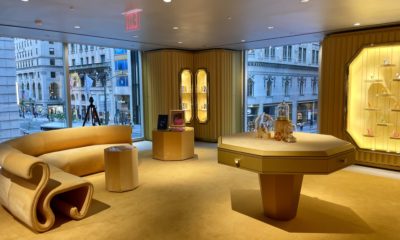
 Eric Feigenbaum1 week ago
Eric Feigenbaum1 week ago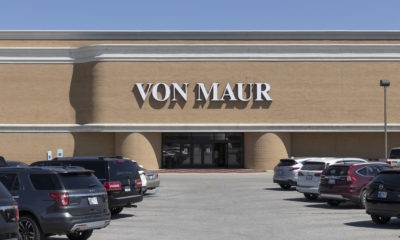
 Headlines1 week ago
Headlines1 week ago
 Headlines1 week ago
Headlines1 week ago
 Headlines2 weeks ago
Headlines2 weeks ago
 Headlines1 week ago
Headlines1 week ago
 Designer Dozen2 weeks ago
Designer Dozen2 weeks ago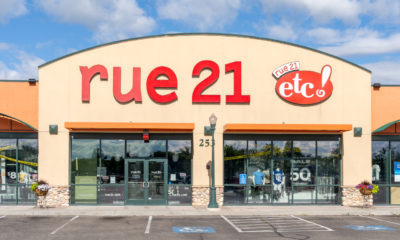
 Headlines6 days ago
Headlines6 days ago


